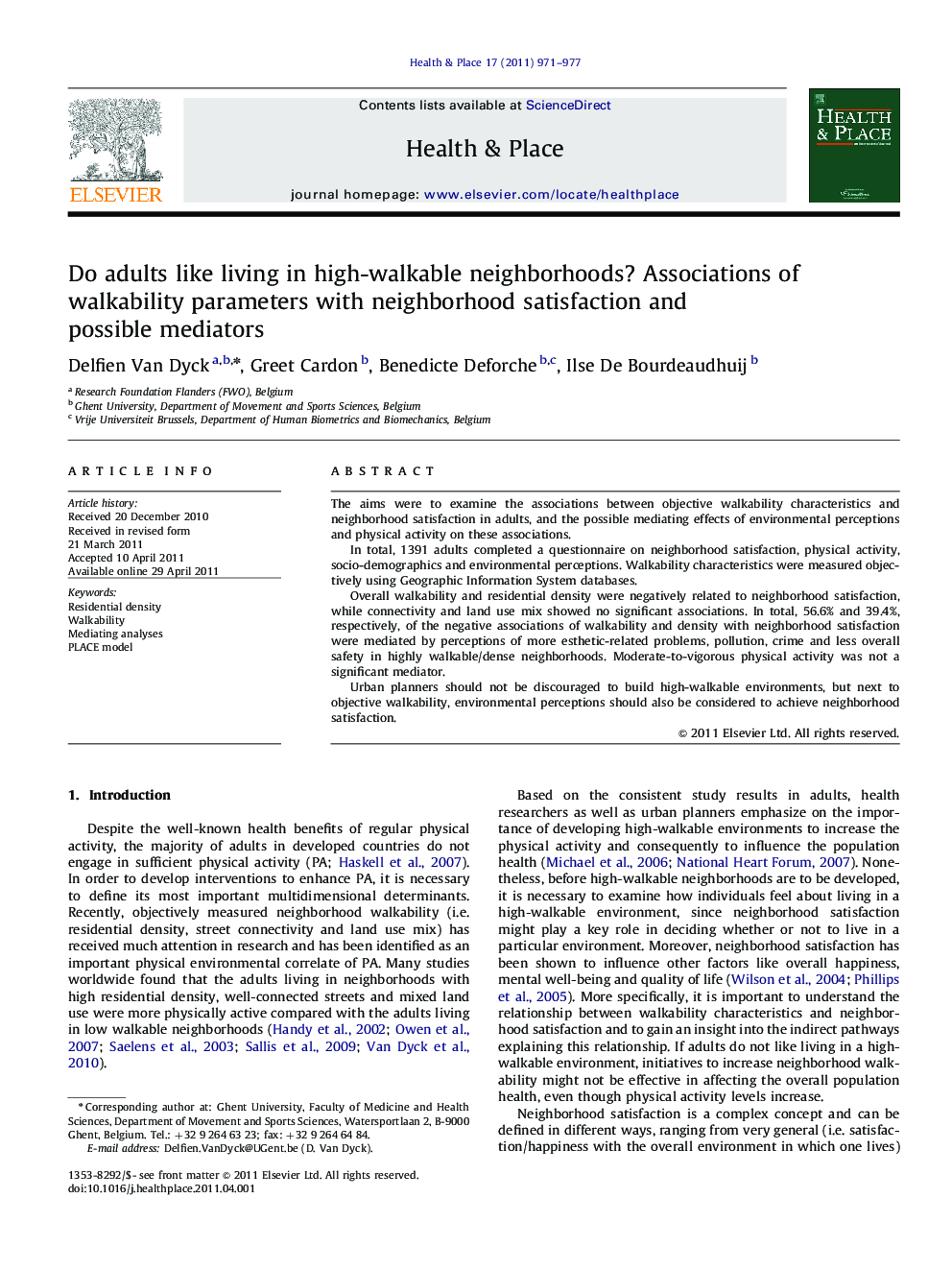| Article ID | Journal | Published Year | Pages | File Type |
|---|---|---|---|---|
| 1048705 | Health & Place | 2011 | 7 Pages |
The aims were to examine the associations between objective walkability characteristics and neighborhood satisfaction in adults, and the possible mediating effects of environmental perceptions and physical activity on these associations.In total, 1391 adults completed a questionnaire on neighborhood satisfaction, physical activity, socio-demographics and environmental perceptions. Walkability characteristics were measured objectively using Geographic Information System databases.Overall walkability and residential density were negatively related to neighborhood satisfaction, while connectivity and land use mix showed no significant associations. In total, 56.6% and 39.4%, respectively, of the negative associations of walkability and density with neighborhood satisfaction were mediated by perceptions of more esthetic-related problems, pollution, crime and less overall safety in highly walkable/dense neighborhoods. Moderate-to-vigorous physical activity was not a significant mediator.Urban planners should not be discouraged to build high-walkable environments, but next to objective walkability, environmental perceptions should also be considered to achieve neighborhood satisfaction.
